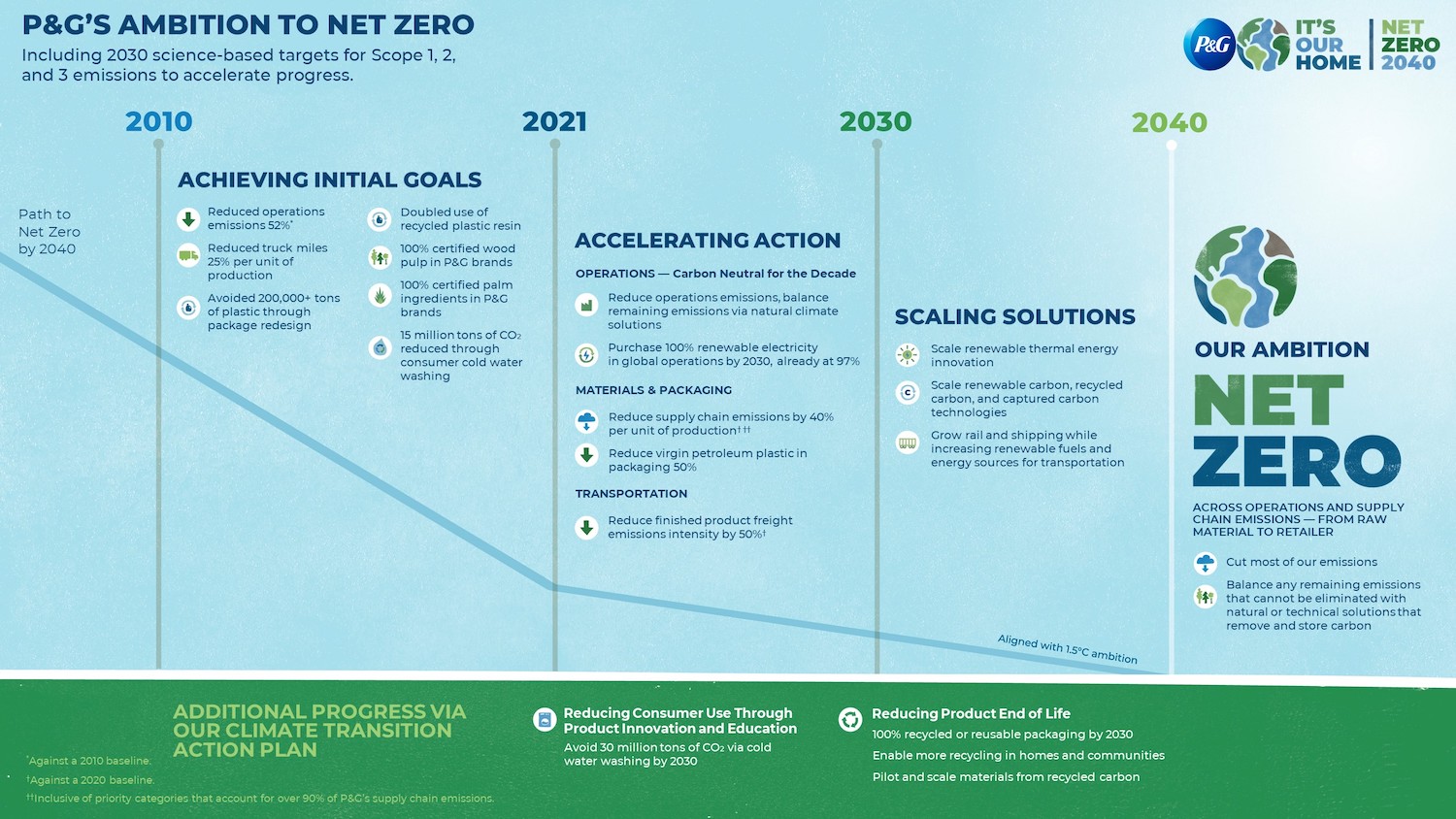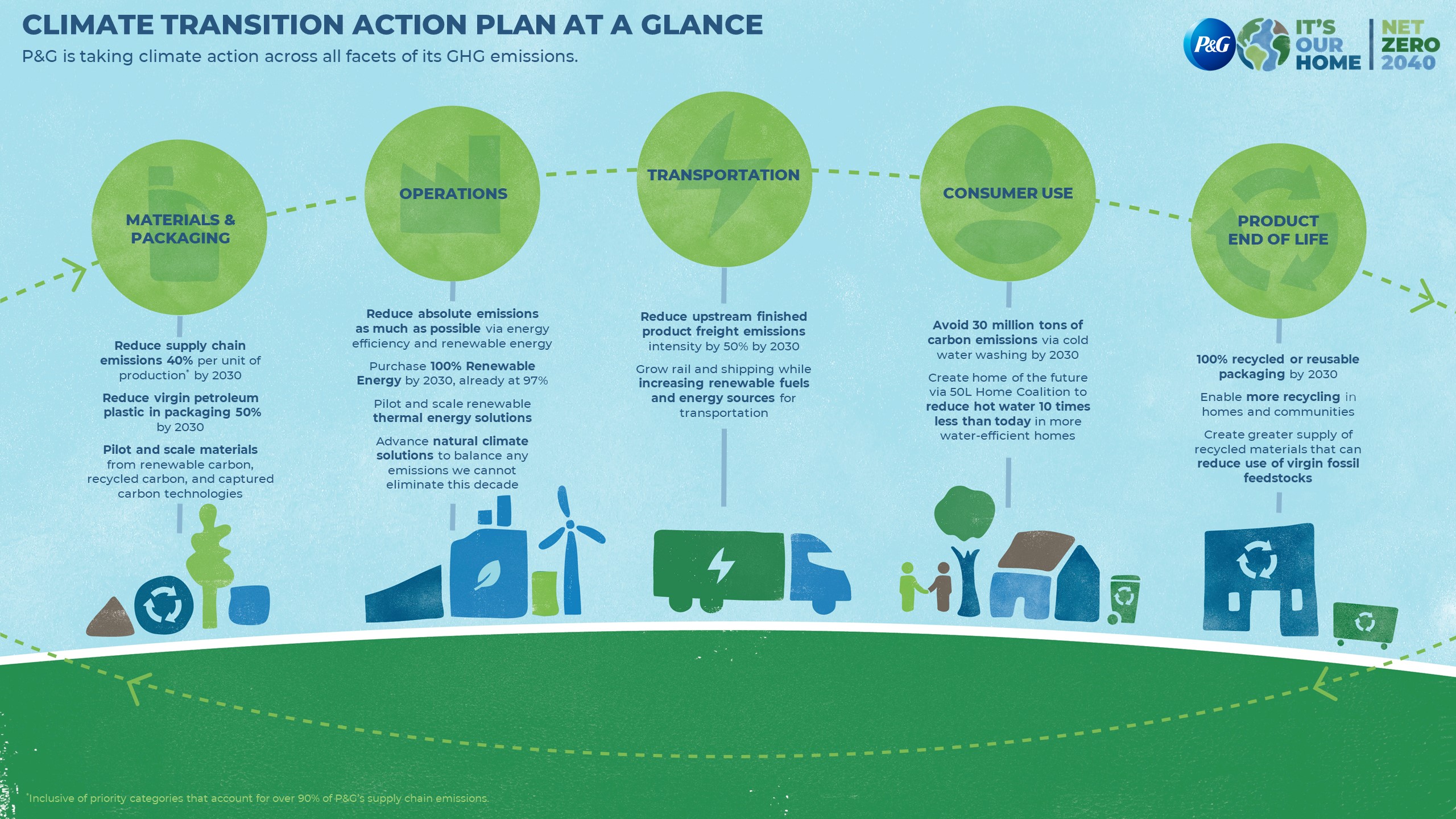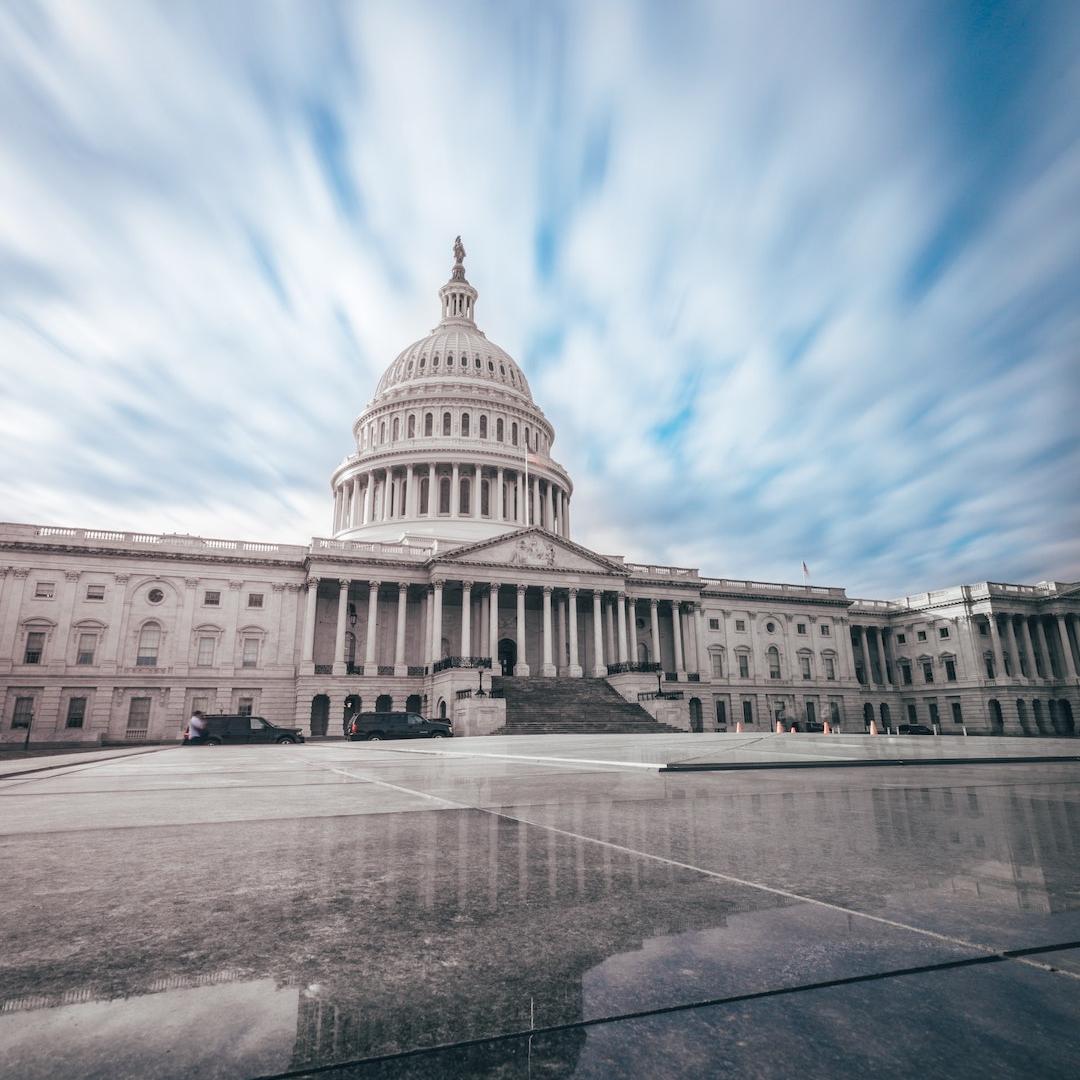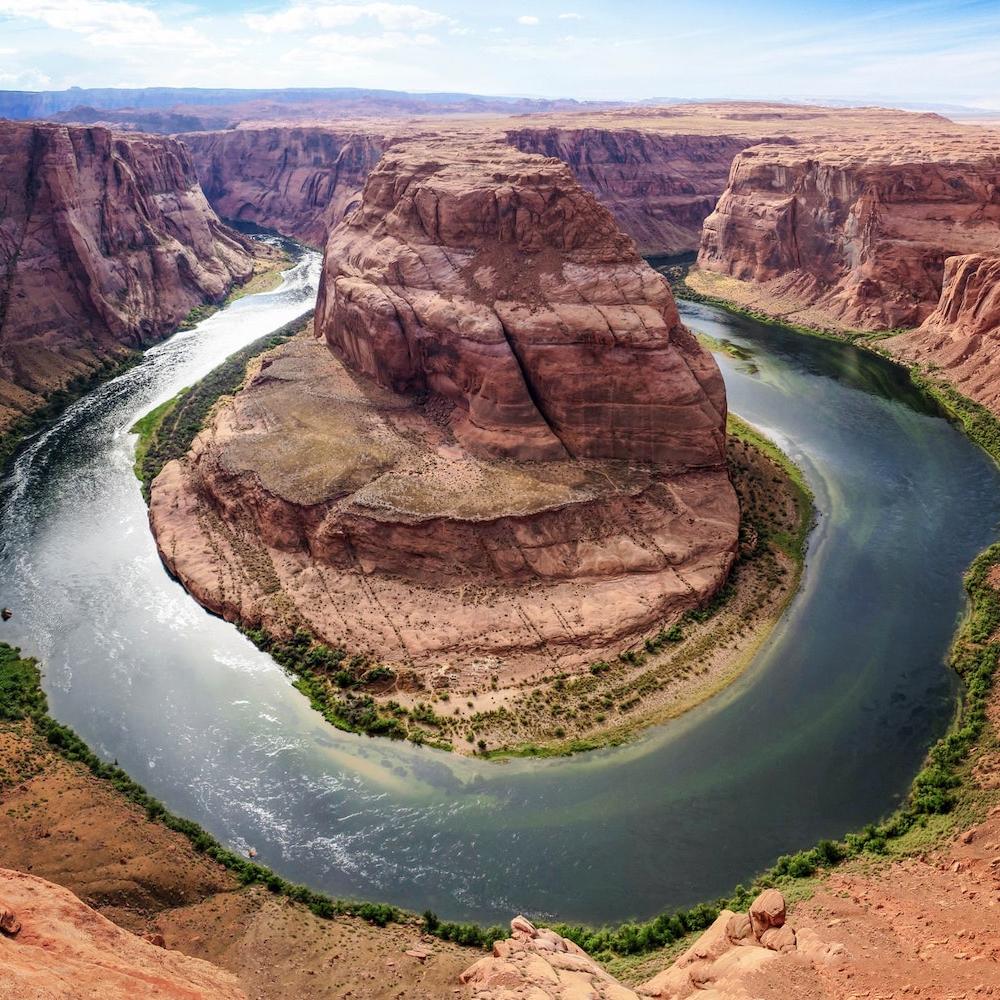New Eyewear Exposes The Big Lie Behind Carbon Capture and Sequestration


Stakeholders in the carbon capture and sequestration (CCS) field have been promising a rapid, large-scale solution to the global warming problem. However, those promises ring hollow. CCS does not address the root cause of the impending climate catastrophe, a point that is so simple an ordinary pair of glasses can make it.
The real problem with carbon capture and sequestration
The carbon capture and sequestration field first caught public attention in the U.S. in 2003, when the George W. Bush administration inaugurated a project called FutureGen. It was designed to funnel carbon from an existing coal power plant in Illinois into a pipeline, and convey it to a permanent underground burial site.
In terms of climate action, the permanency of the FutureGen approach seemed to be a step up from an emerging practice in which captured carbon was injected into oilfields to improve well output. Somewhat ironically, though, the failure to participate in that market was one of the factors leading to the demise of FutureGen. After a series of cost overruns and reconfigurations, the Barack Obama administration pulled the plug on FutureGen in 2015.
The real problem is that CCS does nothing to interrupt the demand for fossil sources of fuel and energy. It simply sweeps up afterward. New research also suggests that CCS systems can be counterproductive due to the amount of energy needed to run them.
A better use for captured carbon
Captured carbon can be set to work in a more beneficial way, namely by deploying it to replace fossil sources for fuels, plastics and petrochemicals.
That gives rise to the question of where the supply of captured carbon would come from, if and when fossil fuels are no longer used to generate power. That would have been a good question just a few years ago. However, recent developments in carbon capture technology have provided pathways for recycling carbon from industrial processes. Excess carbon can also be extracted from ambient air.
Some of these technologies have been many years in the making, and are just now emerging into commercial use.
One interesting example is the company LanzaTech, which uses a microbial system to convert industrial waste gases into the chemical building blocks of fuels and plastics. LanzaTech received an assist from the Obama administration to develop its carbon recycling system for waste gas from steel mills. Since then it has branched out into other gases, including a a system to produce sustainable jet fuel from landfill biogas which won an award from the Energy Department.
“Black leaf” mimics photosynthesis for carbon capture and recycling
A different pathway is illustrated by the carbon capture and recycling company Twelve. Its roots also go back to the Obama administration when graduate students at Stanford University developed a unique catalytic carbon conversion system powered by electricity.
With support from the Energy Department’s Lawrence Berkeley National Laboratory, the company’s co-founders refined their process into an electrochemical reactor they call O12, which they describe as a “shiny black leaf” that mimics photosynthesis on an industrial scale.
“It uses proprietary catalysts to transform CO2 into new products, using just water and electricity as inputs,” Twelve explains. “Pure oxygen is our only byproduct. O12 achieves the same CO2-transforming power as 37,000 trees, or 64 football fields of dense forest, in a module the size of a suitcase.”
Twelve prefers to use the term “carbon transformation,” rather than carbon capture and recycling, to reflect its emphasis on weaning industrial chemistry from fossil inputs. “Carbon transformation provides an enduring carbon management solution by eliminating the need for fossil carbon in chemicals, materials and fuels,” according to the company.

Raising awareness about carbon transformation
Carbon capture and recycling has not gained much traction in the public eye, partly because it is still a small field, and partly because it takes place deep within the supply chain.
That could be about to change dramatically. Last week, the sustainable brand Pangaia announced a new line of sustainable eyewear featuring polycarbonate lenses made with Twelve’s carbon transformation technology.
“The new partnership was created to promote the use of climate-conscious materials,” Pangaia announced in a press statement, making it clear that the intention is to focus considerable energy on publicizing the new technology.
“Our goal is not only to showcase the endless possibilities of science-based solutions, but also to promote industry-wide adoption that will help scale technologies and help rid the world of fossil-fuel based polymers and over industrialized materials,” explained Dr. Amanda Parkes, Pangaia's chief innovation officer, in a statement.
The new lenses will be the first commercial use of carbon captured by Twelve.
The eyewear is also the first product to emerge from Pangaia’s newly announced Pangaia Lab innovation platform, which aims to support “the most groundbreaking innovations in materials science with the goal of promoting consumer education and industry-wide adoption that will help scale the brand's fight against climate change.”
Sequestration versus transformation
Pangaia’s effort to raise public awareness about new carbon recycling technology comes at a critical time for climate policy in the U.S.
In its current iteration, President Joe Biden’s ambitious climate plan leans heavily on carbon capture for rapid action. That approach amounts to little more than wheel-spinning, enabling fossil energy extraction to continue at a pace that locks in catastrophic climate change.
Public- and private-sector pressure can make all the difference. The combination of corporate demand and public opinion has driven the market for renewable energy, and a similar dynamic can occur in the field of carbon transformation.
Forward-looking companies like Pangaia and Twelve have provided the blueprint for building public awareness about alternatives to CCS. Now it’s up to other manufacturers and supply chain stakeholders to take advantage of new sustainable technology and lead the way to a more sustainable future.
Images courtesy of Pangaia
An Inside Look at P&G’s Journey to Net Zero


Over 15 years ago, I had an "aha" moment. The year was 2005 and I was leading marketing and innovation for Ariel, one of Procter & Gamble's largest brands, in Western Europe. That "aha" moment began by watching Al Gore’s film, "An Inconvenient Truth," and realizing the gravity of global warming.
At the same time, to help save my brand from declining in market share and relevance, I developed Ariel's Cool Clean or Turn to 30 initiative — which encouraged consumers to wash their clothes in cold water. While this campaign was very successful and increased market share, I made a discovery that would forever change my personal and professional calling. I learned that 80 percent of a detergent’s carbon footprint was related to the temperature of the wash cycle.
Suddenly it clicked: I realized it is possible to grow your business and decrease its footprint at the same time. Success and sustainability aren’t enemies, they’re allies. At that moment, I decided to make sustainability my job and an integral part of how we innovate, build our brands, and run the business at P&G. I pitched the idea to our CEO, he embraced it, and from there, I grew to become P&G’s first Chief Sustainability Officer.
I’ve made it my mission to embed sustainability into everything we do at P&G. We work diligently to ensure that sustainability is built in — not bolted on — to the way we design our products, manage our operations, build our brands, and, ultimately, engage our consumers.
This month, Procter & Gamble announced our expanded global climate ambition — to achieve net zero greenhouse gas emissions across our operations and supply chain by 2040. We have laid out our comprehensive plan to accelerate climate action in our first published Climate Transition Action Plan. This moment, over 10 years in the making, reaffirms P&G’s responsibility to be a force for good in society and the environment, while also being a force for growth in business. Our journey to net zero is informed by three prevailing convictions:
The climate crisis requires bold goals supported by credible, science-based actions
The most recent IPCC report shows us that in addition to making long-term systemic changes, we must act with urgency to avoid the worsening effects of climate change. While establishing a bold, long-term ambition is critical, we think it’s just as important to have clear, credible interim targets to ensure we are making meaningful progress this decade.
P&G has set several 2030 science-based targets to pace our progress toward zero by 2040. These goals include reducing emissions across our operations by 50 percent and our supply chain by 40 percent, which we’ll achieve by accelerating our use of renewable energy, advancing technologies to decarbonize our supply chain, and increasing the transportation efficiency of our finished products.

We may not have all the answers, but we cannot let uncertainty hold us back
In addition to achieving reductions with the tools available today, we need to innovate for the future. At both a company and brand level, we are working to create new systems and processes that produce superior products with a net zero emissions footprint.
For renewable thermal energy we have partnered with the World Wildlife Fund, manufacturers, and local governments to help create the Renewable Thermal Collaborative to identify and scale renewable, cost-competitive thermal energy solutions. We are also advancing low-carbon technologies, materials, and packaging to unlock new ways to decarbonize our supply chain. And exploring ingredients made from captured carbon dioxide which can create a potential fossil-free pathway for ingredient sourcing. Our Tide brand is working with Twelve, a Silicon Valley startup, to explore their carbon capture technology to incorporate CO2 from emissions into ingredients that could be used across Tide.

The future is collaboration
Reaching this ambition will require collaboration with partners across the public and private sectors and involve every aspect of our business. We are using our size and scale to make a collective impact, partnering with consumers to reduce GHG emissions from the use phase of products, creating alliances for carbon-efficient homes, and advocating for policy solutions to decarbonize energy infrastructure. We’ve also signed The Climate Pledge and joined the U.N.’s Race to Zeroinitiative via the Business Ambition for 1.5C, a partnerships that will help mobilize us and fellow signatories toward science-based action and accountability.
As I celebrate a decade in the greatest job on earth, I recognize that the nature of my role is evolving — from navigating intrapreneurial leadership to managing a mainstream business challenge. I hope that in another 10 years my job won’t exist anymore, as sustainability becomes an intrinsic part of every job. Until then, we have work to do. Hard work. We must drive regenerative and inclusive growth where all of us thrive in harmony with nature. While that is an ambitious goal, it doesn’t have to be complicated. Sometimes, it’s as simple as washing your clothes in cold water.
This article is sponsored by Procter & Gamble.
Image credits: Karsten Würth/Unsplash and P&G
New Declaration Calls for a 'Decade of Climate Action' in the Travel Sector


Well over a year into the coronavirus pandemic, and anyone who loves to travel is undoubtedly missing the adventure of exploring parts unknown. While it will likely be years before global travel returns to pre-pandemic levels, a group of stakeholders are taking the pause as an opportunity to shift the sector in a new direction.
Signatories of the newly announced Glasgow Declaration on Climate Action in Tourism will commit to cut global travel emissions by at least half over the next decade and reach net-zero emissions "as soon as possible" before 2050. Specifically, each must deliver a science-based climate action plan within a year of signing on, or update their existing plans to increase ambition.
Stakeholders call for a "decade of climate action" in the travel sector
Signatories will be able to officially sign on to the Declaration in October, ahead of its official launch at the COP26 climate talks in Glasgow.
A wide cross-section of stakeholders took part in information sessions on the Declaration during Climate Week last week, providing some insight into how it will be received in the travel sector. Participants included multilateral bodies like the World Tourism Organization and the U.N. Environment Program, national and regional tourism organizations like VisitScotland and the Caribbean Hotel and Tourism Association, destinations like Machu Picchu and the Oregon Coast, and travel companies like Intrepid Group, Radisson Hotel Group and Inkaterra.
The need for action in the sector is clear: The United Nations estimates that transportation-related emissions from tourism will increase by 25 percent from 2016 levels by 2030, and air travel alone could consume as much as 27 percent of the world’s carbon budget by 2050.
What "build back better" means for the travel sector
The travel sector was among the hardest hit by the COVID-19 pandemic, having lost an estimated $4.5 trillion in 2020. Considering less than half of the global population has received at least one dose of a COVID-19 vaccine, a figure that drops to 2.2 percent in low-income countries, the impacts on society as well as the travel sector are likely just getting started.
The One Planet Vision for a Responsible Recovery of the Tourism Sector was adopted last year with the aim of embedding sustainability and social equity into the way the industry recovers. "This crisis has highlighted both the fragility of the natural environment and the need to protect it, as well as the intersections of tourism economics, society and the environment like nothing before in history," the plan reads. "It represents an opportunity to accelerate sustainable consumption and production patterns and build back better tourism."
Climate action is a central piece of that plan: Among other things, the plan calls for monitoring and reporting carbon emissions from tourism, promoting the introduction of science-based targets, accelerating the decarbonization of tourism operations, and engaging the tourism sector in carbon removal.
The Declaration is being pitched as the next step forward, with the aim of "defining a clear and consistent sector-wide message and approach to climate action in the coming decade."
A number of the organizations that took part in information sessions last week are already taking some steps on their own: VisitScotland has an environmental action plan in place, Inkaterra is working with other local stakeholders to make Machu Picchu the first carbon-neutral destination in the world, and Intrepid Group hired a climate scientist to lead the way toward achieving its science-based targets, among other examples. As these industry leaders set an example, it makes sense to want to scale this type of action sector-wide, and it seems some stakeholders in the travel sector feel the Declaration can do just that.
“With a few notable exceptions, travel and tourism has had a slow start in taking the necessary and urgent action to meet global climate targets," Jeremy Sampson, CEO of the Travel Foundation, said in a statement. "However, there are many organizations which want to take more action but have not, either because they are unsure what steps they can take, or because the change required is bigger than any one organization can deliver. The Glasgow Declaration is our opportunity, and COP26 is our moment, to unite and forge those pathways to halve emissions within this decade, so that tourism’s future, and those of the destinations it relies on, is assured.”
Image credit: Spencer Davis/Unsplash
This New Innovation Lab Supports Women Entrepreneurs Who Solve Sanitation Challenges


A college student visits a public toilet built by WaterAid, with support from Kimberly-Clark, at a bus stop in Dhaka, Bangladesh.
Under normal circumstances, many people around the world face discrimination around menstruation as well as difficulty obtaining hygiene supplies, either due to unaffordability, lack of access or inadequate information.
The coronavirus pandemic has made matters even more challenging, as clinics serving women were forced to alter their services and some regions saw hoarding of menstrual products like pads and tampons, similar to the notorious stockpiling of other staples like toilet paper and disinfectants. Add that to the fact that women represent an outsized proportion of frontline workers, and it’s clear the pandemic has made an already difficult situation for some even harder.
Why period equity matters
Around the world, 129 million school-aged girls do not attend classes. While those numbers cannot be directly linked to periods, in part due to the difficulty in recording absenteeism, the United Nations Educational, Scientific and Cultural Organization (UNESCO) estimates that girls miss four days every four weeks. This is a problem in richer and poorer countries alike: In a 2019 survey, 84 percent of menstruating teenagers in the U.S. said they have missed class during their periods or know someone who has.
There are several reasons girls may miss school during their periods, including lack of access to hygiene products or inadequate access to toilets, hand-washing facilities and hygienic waste management, as well as insufficient information and social stigma.
All of this adds up to missed opportunities for women and girls around the world. Further, recent studies have shown a link between period poverty — one term describing the reality of not being able to afford sanitary products — and poor mental health among college-aged women in the U.S. In developing countries, where girls may miss 10 to 20 percent of each school year, possibly leading them to drop out altogether, the gender disparity for economic opportunity widens even further.
Scaling up women-led startups focused on solving sanitation issues
To help address some of the world’s biggest sanitation issues, Kimberly-Clark, its foundation and the company’s Kotex brand partnered with the Toilet Board Coalition to create the Women in the Sanitation Economy Innovation Lab — which aims to cultivate and catalyze women-led, early-stage businesses within the sanitation economy. The Innovation Lab recently completed its first pilot including five startup businesses from Kenya, the U.S. and the U.K., along with 11 Kimberly-Clark employees who acted as mentors to the group.
“We see there’s a gap in the business ecosystem around women’s menstrual health and personal care products,” said Alex Knezovich, director of operations at the Toilet Board Coalition (TBC), which was established in 2015 to drive private-sector engagement and contributions to Sustainable Development Goal 6 (clean water and sanitation).
“At TBC, we have a 30,000-foot view of the sector. We get to hear a range of voices and see a lot innovation,” Knezovich told 3p. “There are businesses out there for women’s health, but they’re not growing at the pace of other sanitation businesses. They need additional guidance and customized support to further their innovation and ultimately empower more women and girls.”
The Toilet Board focuses on scaling sustainable solutions within the sanitation space, centered on SDG 6.2 which calls for sustainable water, sanitation, and hygiene (WASH) access to women and girls in vulnerable situations. Here, the partnership with Kimberly-Clark made sense for both organizations.
“We’ve always had mentorship at Kimberly-Clark,” Alessandra Castro, the company’s director of global brand purpose and social impact for its adult and feminine care brands, told TriplePundit. “But we never really leveraged why we were doing it, how or for what purpose. The Innovation Lab aligned perfectly with our Kotex brand, which exists to ensure that a period never gets in the way of a woman’s progress. Our partnership with the Toilet Board enabled us to work together and help these women-owned businesses develop and provide opportunities for others.”

Representation matters
In the end, what drives all of the women involved with the Innovation Lab — from the Toilet Board, Kimberly-Clark and participating businesses — is the power to make a difference for those who are held back by not being able to afford products like pads and tampons, and those whose progress is crippled by period stigma.
For Castro, seeing the struggle women experience due to the lack of access to hygiene supplies shifted her perspective. “I knew women didn’t have access, but when you get in there and see the gaps, it’s painful,” she told us. In the Toilet Board’s annual Accelerator program, the predecessor to the more specialized Innovation Lab, Castro mentored a team of entrepreneurs that transformed decommissioned buses in India into toilets for women. It’s a good idea in theory, but in the end, women did not use the buses because of the stigma associated with going to the bathroom. Working with the team in India, Castro and her team realized they had to take a step back.
“There was a huge gap between the team’s analysis of the issue and what was really holding back consumers,” she said. They ultimately opted to convert the buses into health centers where women could gain access to education and feminine hygiene products, as well as use the toilet. “Working with the team to positively impact so many women was a life-changing experience,” she added. “Kotex is more than a global brand. The product is only part of what the brand stands for, which is bringing a clear purpose for feminine care to eliminate stigma, educate and open doors for women and girls.”
With a background in women-focused media production and engaging more young women in the production process, Knezovich understands the power of representation. “You can’t be what you don’t see,” she told TriplePundit. “It’s amazing to see what happens when we connect the entrepreneurs with mentors at a leading multinational corporation who believe in them and their businesses. That’s the through line for me: getting the stories and relationships there for women to comprehend their potential.”
Jasmine Burton, former Innovation Lab manager at the Toilet Board, further noted that Kimberly-Clark mentors helped provide support for the Lab’s “female entrepreneurs as they aim to tackle some of their unique business challenges and positively contribute to some of the world’s most pressing sanitation issues.” And for her personally, as she left the project to start an MBA program, she added, “It is my personal mission to help support, amplify and lift other women in the Sanitation Economy as I climb.”
More still to come
With the success of the pilot program, Kimberly-Clark and the Toilet Board plan on expanding the Innovation Lab to include more entrepreneurs and make more partnership opportunities available. As the project moves into its next stage, Castro emphasized the importance of the work ahead. “Women are addressing some of the biggest challenges facing our society,” she told us. “A period should never get in the way of her progress.”
This article series is sponsored by Kimberly-Clark and produced by the TriplePundit editorial team.
Image credits: WaterAid/Jannatul Mawa
Fresno County Will Soon Be Home to the Largest Green Hydrogen Plant on the West Coast


Cars drive through Fresno County, California, which will soon be home to the largest green hydrogen plant on the West Coast.
A leader in fuel cell solutions, Plug Power recently announced it will build the largest green hydrogen production plant on the West Coast. The state-of-the-art production facility in Fresno County in the Central Valley of California will be powered by renewable energy. Once completed, it will produce 30 metric tons of green hydrogen daily and serve customers up and down the West Coast.
The project also includes the construction of a new wastewater treatment facility that will supply the water needed by the plant and provide recycled water to Mendota, an increasingly water-stressed agricultural hub in Fresno County.
The California facility will expand Plug Power’s network of plants that already includes sites in New York, Tennessee and Georgia. Combined, they will supply 500 tons of liquid green hydrogen daily by 2025, preventing 4.3 million metric tons of carbon dioxide emissions from entering the atmosphere.
What is green hydrogen?
At the California plant, Plug Power will use electrolyzers to split water into hydrogen and oxygen through the electrolysis of water. Since the system will be powered by a 300-megawatt solar array, the only emissions created will be oxygen.
Although hydrogen itself is a green fuel, it can be associated with large amounts of carbon dioxide emissions in the manufacturing process. Almost all (99.6 percent) of the hydrogen on the market is produced using fossil fuels. For example, brown hydrogen is produced from coal and gray hydrogen from natural gas.
Therefore, not all hydrogen is created equal from a sustainability standpoint. Because hydrogen is very energy-dense, the production process is energy-intensive. Using brown or gray hydrogen is similar to driving an electric vehicle and charging it with electricity generated from coal. Although the car itself would have minimal emissions, it creates a demand for polluting energy sources.
Is green hydrogen cost-competitive?
“When fully built, the network of plants in the U.S. will offer transportation fuel to customers that is price-competitive with diesel," Plug Power claims in a press statement. "In addition, Plug Power’s investment in green hydrogen production will contribute to decarbonizing light-duty vehicles, freight-transportation, and logistics operations, and supports California’s leading role in developing hydrogen as a zero-emission fuel.”
Research firm Wood McKenzie expects green hydrogen prices to fall by 64 percent by 2040. Currently, China and the United States account for 21 percent and 19 percent of global demand. However, one obstacle to large-scale adoption is the current lack of infrastructure, including fueling stations and pipelines. Removing these obstacles would make green hydrogen more cost-effective.
Some of this could change with the new infrastructure bill making its way through Congress and a potential extension of the investment tax credit (an incentive for wind and solar energy). Nevertheless, the falling cost of solar and wind energy is excellent news for the green hydrogen market.
Why is green hydrogen so appealing?
Green hydrogen presents opportunities to lower carbon emissions from specific sectors that are especially polluting, such as the chemical, iron, steel and long-haul transportation sectors.
Many delivery fleets, including at DHL, Amazon, UPS, FedEx, Walmart and the U.S. Postal Service, are starting to electrify. But some of the logistics around batteries are challenging for long-haul trucking, freight shipping and air travel. Transporting heavy batteries is inefficient and takes up space, and refueling can be time consuming. By contrast, hydrogen is energy-dense, thus it is space efficient and offers quick refueling.
The Plug Power announcement signals the green hydrogen market is advancing. Pending required permits, the company expects to break ground in early 2023 and begin production in early 2024. Lee Ann Eager, president and CEO of the Fresno County Economic Development Corp., is also counting it as a win for the region, which has some of the poorest year-round air quality in the U.S. and is now choking on smoke from nearby wildfires.
“Green hydrogen represents the energy of the future, and with this major announcement, Fresno County will soon plant its flag as the strategic center for California’s hydrogen economy,” she said. “This project is poetic justice for our region, which has struggled with persistent poor air quality and will produce the zero-emission fuel needed to support the state’s renewable energy goals.”
Image credit: Tommy Lisbin/Unsplash
Is the Tide Turning on Corporate Climate Lobbying?


This week more than 160 U.S. businesses, including Clif Bar and Numi Tea, joined together in a campaign to lobby their Congressional representatives in favor of strong climate policies and encourage their customers to do the same. Organized by the Climate Collaborative, a coalition of businesses pursuing climate action, the #Call4ClimateNOW campaign looks to combine the influence of brands with the collective power of the public to push ambitious policy forward.
The effort comes on the heels of the latest assessment report from the Intergovernmental Panel on Climate Change (IPCC), which U.N. Secretary-General António Guterres called a “code red” for humanity.
The past couple of years have seen a significant uptick in corporate climate targets in parallel to government action. The intersection between businesses and policy is complicated, but it does not need to be.
A legacy of protectionist lobbying
Many people have a negative association with companies and climate lobbying. Public statements undermined by political donations raise the concern that some companies are talking out of both sides of their mouths. For example, earlier this year, Royal Dutch Shell, an oil company, released an environmental report touting its investments in renewable energy on the same day it released a report noting that its single largest political contribution was to the American Petroleum Institute, a lobbying group that has publicly stated it intends to fight the Biden administration’s climate policies. Further, earlier this month, the U.S. House of Representative Oversight Committee called on Exxon, Chevron, BP and Shell to testify about accusations of deliberately misleading the public on climate change.
While the oil companies make big headlines, the political pressure for industry-specific protections is common regardless of the size of the company’s purse. It is also understandable to a certain extent: Businesses need to protect their bottom lines. Just as lobbyists for big oil companies advocate for what they view as their companies’ best interests, so do all lobbyists, including those that advocate for issues such as improved health care and better labor protections.
The difference is that the kind of lobbying that has often been the norm may protect a bottom line but consequently threatens everything else. Setting aside big oil, which has a direct impact on the bulk of greenhouse gas emissions, in the past many companies in other sectors have also lobbied against their own long-term interests by a narrow vision of the bottom line. The triple bottom line — the environmental and social costs of operations in addition to the financial — is more important than ever. Consequently, as climate change has intensified, what may have looked like protectionism in the past now looks like heads in the sand. For many companies, the risks to their traditional bottom lines are now greater due to climate change.
Pushing for positive change
The World Economic Forum’s Global Risks Report 2021 put climate action failure as the second highest risk for both likelihood and impact (following extreme weather and infectious diseases, respectively). According to analysis by the Washington Post, 1 in 3 Americans live in a county that was affected by extreme weather at some point this summer. As those impacts mount, companies have to consider the physical risks to their operations as well as their employees. From grid failures in Texas to lack of water in the West, companies should consider these factors when determining where to locate and how to run their businesses, beyond just the traditional financial incentives.
The risk also now goes both ways — how operations are impacted by climate change and how a company’s way of doing business impacts the climate. The pressure has been building to get to this point, from both customers and investors. As awareness grows on the issue, so does the push to do something. Not having a climate plan is increasingly seen as a higher risk. Taking that one step further is to examine to what extent a company participates in policy.
For a company to directly lobby for climate policy, especially one that may depress returns in the short term, it is important to factor in the medium- to long-term risks of climate change. It is also in a company’s best longer-term interests to analyze future risks and manage for them by not only supporting certain climate polices, but also participating in their formulation. Pushing back without negotiation only means if a policy is approved, the company has had no say in its crafting.
A few industries have taken that tack, although some have done so grudgingly. Seen in a pragmatic light, companies can design legislation to even the playing field and provide regulatory certainty by working with policymakers. For example, as water resources continued to be stressed by increasing temperatures and other climatic changes, beverage companies like Coca-Cola became interested in policy solutions for strained water supplies, understanding that climate change had a direct impact on their essential operations.
Building cooperation
Companies have often been on the outside of climate policy-making, whether by their own efforts to thwart the process or by distrust from the political players. During the negotiations for the Paris Agreement at the COP21 climate talks in 2015, companies engaged more directly than they had previously in climate policy discussions. In the lead-up to COP21, the U.N. Global Compact, CDP, World Wildlife Fund and World Resources Institute launched the Science-Based Targets Initiative, which provides guidance for setting stringent emissions reduction plans. Since its launch, more than 1,000 companies have joined the initiative.
Corporate lobbying has historically taken the traditional route of campaign donations and corporate protection. More companies are now seeing the benefit of having a seat at the table as a collaborative partner to craft policies that could help their industries meet demands of customers, minimize risk from climate change, and help ensure they are active participants in decelerating its worst impacts. There remains a lot of progress to be made, but the 160 companies that signed up to #Call4ClimateNOW may indicate that companies finally understand what is at stake and what they can do about it.
Image credit: Samuel Schroth and Andy Feliciotti via Unsplash
What Facebook’s Water-Positive Goal Means for Water-Stressed Communities


The Colorado River, home to the famed Horseshoe Bend, is one of several waterways that is under extreme stress as a "megadrought" builds in the U.S. Southwest.
About 95 percent of the western U.S. is now under drought conditions, and southwestern states — Arizona, Nevada and Utah, as well as parts of California, Colorado and New Mexico — are suffering a “megadrought” that has been building for over 20 years. The megadrought already outstrips the Dust Bowl of the 1930s and is the worst drought in the region in 500 years. According to scientists, this is the first megadrought caused and exacerbated by climate change. Unfortunately, getting back to pre-drought levels would likely require a decade of wet years, which under current climate scenarios is unlikely.
For people and businesses in the southwest, this means they will need increased emphasis on water conservation and watershed restoration. Luckily, conservation strategies and policies had been ramping up even before the drought lurched into megadrought status over the past few years. In addition to shifting behaviors of consumers — for example, shifting away from water-intensive landscaping — thirsty businesses will need to reconsider their strategies in the region. To that end, Facebook recently announced an aggressive company-wide water goal, including efforts focused on the watersheds in the southwest where Facebook has operations.
Facebook aims to be ‘water positive’
On August 19, Facebook announced a new goal to be “water positive” by 2030 — that is, it intends to restore more water than than it consumes globally. The company had already worked to reduce water consumption at its data centers through increased deployment of renewable energy: In 2020, the footprint of the tech company’s global office and data centers reached the milestone of being supported by 100 percent renewable energy. The added benefit is that wind and solar photovoltaic power systems use negligible amounts of water, reducing the company’s water footprint as well. According to Facebook, the renewable energy switch alone has led to a savings of 1.4 billion cubic meters (over 380 billion gallons) of water, enough to fill 560,000 Olympic-size swimming pools.
“Facebook’s data centers on average already use 80 percent less water than the industry standard,” Stefanie Woodward, water program lead for Facebook, told TriplePundit. “Now with this new goal, we will restore more water than we consume through conservation and ecosystem restoration, water supply and access, and investing in technology solutions to sustain watersheds into the future.” The company has started working in areas identified as those with high levels of water stress: New Mexico, Arizona, Texas, Utah, Oregon and California.
In order to reach its ambitious goal, Facebook has to partner with stakeholders in the watershed. “One thing that’s unique about our water restoration is that we work not just with local nonprofits, but also with utilities,” Woodward said. When looking to establish water restoration and conservation projects, the company tries to find on “projects that have a social justice or climate resilience component” in the watersheds where Facebook has operations, she continued. To that end, so far the company is engaged with 14 different water restoration projects across six basins, which restored 595 million gallons of water in 2020.
New Facebook projects aim to tackle water scarcity in Arizona
One of Facebook’s flagship water projects is in conjunction with its data center in Mesa, Arizona. The city draws water from both the Colorado and Salt Rivers. While the Salt River basin is in relatively good shape, with reservoir levels at 67 percent, the Colorado River is under extreme stress. For the first time ever, in August 2021, the federal government triggered mandatory water restrictions in the watershed, including an 18 percent cut for Arizona, mainly for agriculture. Facebook has invested in projects that will restore 200 million gallons per year to both river basins. Further, the company is working with the Salt River Project to source water credits that cover the operational usage of the data center, instead of drawing water directly from the city of Mesa, freeing up additional supplies for other needs.
While such volumetric goals are important, Facebook’s water-positive goal aims to go beyond the volume. “For each of our high-risk basins, we’re looking at ways we can have a catalytic impact to support those who are already working in the watershed,” Woodward explained. “Research, technology investments and grants can all open the door to work in more creative ways in watersheds, in addition to the volumetric goals.”
Further, the work in Mesa and other sites around Arizona are personal for Woodward, who hails from the state. “The three projects [in Arizona] that we added this year have a special place in my heart, having visited all those places,” she said. As a water expert, Woodward doesn’t need added incentive, but studies show that a personal connection to water makes engaging in water conservation programs more successful. Arizonans will increasingly feel the brunt of water stress in their watersheds, which could lead to more active stakeholder participation.
Communities, water and company operations
Facebook’s announcement comes at a critical point in the intersection of water and technology in water-stressed areas in the southwest. Data centers are notoriously thirsty. It’s a complicated scenario: The southwest is growing in both population and business centers — more straws in the same drink — while climate change adds further stress to supplies. Data centers across the board have improved efficiency, and companies are investing in renewable energy (thus reducing water demand) and setting water goals. Microsoft has a similar water positive by 2030 goal. But some communities are pushing back at water demands from technology companies in their area, and the tension will likely increase as the drought in the region continues.
Efficiency, restoration and the deployment of low-water electricity are all critical components of enabling a water-positive future for the southwest. In order to ensure water supplies are available to meet all the demands of the people and businesses in the region, every stakeholder will need to be engaged. Companies like Facebook with a significant presence and a proactive water stance to not only reduce their usage, but also enhance supplies are necessary for communities to be resilient and sustainable under climate change. In the end, water is always personal.
This article series is sponsored by Meta and produced by the TriplePundit editorial team.
Image credits: Gert Boers and Tom Gainor via Unsplash
This Brand Has a Plant-Based Answer to Plastic Tableware, And It's Looking to Scale Up


Bamboozle, a company that produces plastic-looking kitchenware from a combination of bamboo and other renewable sources, is looking to scale up and further its aim to cut disposable plastic use.
“We really want to continue evolving our material and finding partners who want to take on the material,” said Avishai Greenstein, Bamboozle’s brand manager. “We’re very happy to engage with them. Our goal is to accelerate the transition away from legacy plastics. If we do our small part in the housewares industry, we are happy with that. Hopefully, the work we are doing can advance the cause across more industries."
Bamboozle built loyalty during the pandemic, and now it's looking to grow
The six-year-old company uses Astrik, a mix of 15 percent bamboo and 85 percent polylactic acid (PLA), a plastic-like substance made from renewable sources such as corn starch, sugarcane or tapioca, to make serving dishes, bowls, composters and other kitchenware.
Many of the machines used in manufacturing Bamboozle products have been converted from the plastics industry. The company has a partner in the Midwest that mixes materials. Its products are manufactured with one-fifth of the greenhouse gases used to make plastic, and once they reach the end of their lifespans, they are biodegradable, so they don’t end up in oceans or landfills.
The company’s composter has proven popular recently, in part because Bamboozle was an early entry in the composter arena. “It seems like the first person to get it right, gets the most business on the Internet,” joked Greenstein.
Bamboozle built loyalty during the pandemic in part by selling attractive, functional, sustainably-produced housewares online and making custom items. It was able to persevere despite the explosion of single-use plastic, which people felt were safer to use while COVID-19 was raging. Bamboozle’s product line also includes trays and cups designed to prep, cook and serve a meal.
“Custom work is great,” Greenstein explained. “It gives us the capability to be more flexible. People don’t want to copy us because we can just do it for them.”
The company is also connecting with smaller retailers with environmentally-friendly products as well as expanding its involvement with branded e-commerce. Independent stores, which struggled during the pandemic, are making a comeback and shifting to more sustainable, zero-waste products. “We love working with them,” Greenstein said. “We want the most cutting edge partners."
“We want to engage with other brands,” he added. “We want to build out a list of people trying to do something different and better. We’re sticking to our guns, with elaborate colors and unique designs. We have to be ourselves as much as possible.”

Scaling an alternative to single-use plastic
Bamboozle’s biggest rival is traditional plastic items. “The competition is something that breaks easily and is just trying to chase the lowest price possible,” Greenstein noted.
Some consumers have voiced concerns that Bamboozle uses foods in its product formula, and the company says it is always investigating alternatives. “We’re looking at ways to use garbage, or possibly grow more bamboo,” Greenstein told us. “We look for opportunities in every step of the supply chain to make improvements.”
The increase in sustainably-produced items has been hampered in part by their price and design. “People may be willing to spend more on design, and then sustainability is the cherry on top,” he said. “Sustainability is wonderful, but useful is important. I wish more people would care about sustainability.”
Eventually, sustainable operations will be the standard for how most things are done, Greenstein predicts. If everyone in every supply chain just improved their sustainability efforts by 5 percent, whether in terms of construction, transportation or waste disposal, sustainability levels would grow much faster, he added. “Never downplay anyone who says they are only doing this little thing,” he said. “We have to start somewhere.”
Images courtesy of Bamboozle
The Private Sector Takes a Stand for Oceans During Climate Week


Climate Week in New York City started out with a clear message: The time for talking has passed; put your words into action. Climate action comes in many forms — policy change, investments in ecosystem restoration, clean technology innovation and much more. Oceans, increasingly under threat from melting glaciers and coral bleaching, are another big blue opportunity for action sitting right under our noses.
Over the last two centuries, the oceans have absorbed a third of the carbon dioxide that has been released into the atmosphere and 90 percent of the heat trapped by elevated levels of greenhouse gases, according to the World Wildlife Fund. Natural cycles store carbon, but the robust functioning of these processes isn’t guaranteed. For one, we need to ensure the protection of marine biodiversity. Recognizing the relationship between a healthy oceans and climate change mitigation, on Monday the corporation-led United Nations Global Compact announced its Ocean Stewardship Coalition, designed as a forum to drive responsible ocean business practices and restoration.
The big picture is that achieving global coordinated action in responsibly managing our oceans requires cross-sector cooperation, something the U.N. Global Compact is well-positioned to achieve. “The challenges of climate change and biodiversity loss cannot be overcome unless the ocean is central to considerations,” Peter Thomson, the U.N. Secretary-General's special envoy for the ocean, said in a statement. “Also true is that strong global governance and coordination will be essential to realising the full potential of a sustainable ocean economy. The launch of the U.N. Global Compact Ocean Stewardship Coalition is timely — never has collaboration between multi-stakeholders been more vital.”
The rubber on the road impact of a United Nations coalition for the oceans
Is it possible for a U.N. forum to make real change? The U.N. Global Compact has had its share of critics, including those skeptical about the impact such a business group can make. The Compact claims tangible results, though. Former CEO and executive director of the Compact, Lise Kingo, has cited some measurable progress the group has brought in its two decades of existence.
In an article for the U.N. Chronicle, Kingo notes advances in water stewardship and Sustainable Development Goal (SDG) reporting, as well as coalition-building through the Sustainable Ocean Business Action Platform. She writes that the platform has mobilized more than 40 major international civil society and private-sector organizations in action, investment and partnerships in the name of ocean health. Perhaps positive outcomes from the Ocean Stewardship Coalition are possible.
Two years after publishing its Sustainable Ocean Principles, the Compact takes its ocean advocacy a step forward into collaboration through the Coalition — convening governments, companies, NGOs, academic institutions, and U.N. partners to find direction and initiative regarding ocean conservation and management.
First to come from the Coalition is an input paper for COP26, happening in November. Titled Blueprint for a Climate-Smart Ocean to Meet 1.5 ° C, the paper reports on four work-streams that brought together 100 stakeholders around the subjects of zero-carbon maritime transport, offshore renewable energy, low-carbon blue food and nature-based solutions. The resulting recommendations are specific enough to be practical, touching upon the role seaweed can play in carbon sequestration, shipping technology advancement, offshore renewable energy development and science-based emissions reduction for seafood.
A report any corporation should read to survive a warming climate
Specificity and practicality define this input paper. Six basic steps branch into explicit actions for U.N. parties, business leaders and financial actors. Even if the report doesn’t lead directly to action in the near-term, its detailing of the business case for ocean conservation can create ripple effects across the membership.
One fast fact cited by authors: As early as the 2030s, flooding is projected to become an increased threat to critical coastal infrastructure like ports — of note to any business reliant on shipping. From this angle, the Ocean Stewardship Coalition’s first report doesn’t ask of businesses charity, or even “blue washing,” but sensible business practices.
Image credit: Shifaaz shamoon/Unsplash
The Big News From Climate Week (So Far)


As Climate Week enters its third day, the headlines are coming in quickly. Don't have time to keep up? We've got you covered. Read on for the biggest news that crossed our desks this week.
Climate Week kicks off with urgency and optimism
Climate Week kicked off on Monday with calls for urgent action to reduce greenhouse gas emissions. "This week is about getting it done," Helen Clarkson, CEO of the Climate Group, said during her opening remarks at Climate Week.
Last month's report from the Intergovernmental Panel on Climate Change (IPCC), as well as another released last week, paint a grim picture of climate impacts accelerating at a far faster rate than previously estimated. It's a hard pill to swallow, but IPCC scientists are quick to note we still have time to avert the worst impacts of climate change, if we act quickly.
Climate Week organizers leaned in to that positive sentiment as they looked to stir the heads of state, business leaders and NGO representatives in attendance into action. "This is your problem, not your successor’s," Clarkson told leaders plainly. "And as exhausting as all of this sounds, I still think we can be optimistic about our ability to get it done."
Under pressure to act faster, governments make new commitments
Alongside Climate Week, world leaders will meet in New York for the U.N. General Assembly under intense pressure to ramp up the ambition of their climate policies ahead of the COP26 talks in Glasgow. If the early part of the week is any indication, many are ready to answer the call.
Among the news this week, a group of Mediterranean countries pledged to work together to tackle the challenges posed by extreme weather, following a summer of unprecedented wildfires. Costa Rica and Denmark are leading efforts to build the world’s first diplomatic alliance to manage the decline of the fossil fuel industry. With their "Beyond Oil and Gas Alliance,” the leaders aim to set a deadline for the end of oil and gas production and set off a push to keep fossil fuel reserves in the ground.
Meanwhile President Joe Biden pledged to double the United States' climate finance commitments to developing nations to $11.4 billion per year by 2024.
CFOs pledge $500 billion to advance the SDGs
A group of chief financial officers from 60 leading companies pledged to invest more than $500 billion over the next five years to support the U.N. Sustainable Development Goals (SDGs). The CFOs, whose companies represent a combined $1.7 trillion in market capitalization, also committed to link nearly half of all corporate financing to sustainability performance, with plans to issue hundreds of billions in new sustainable finance instruments, including green and sustainable bonds.
All of the CFOs are members of the U.N. Global Compact CFO Taskforce, which says corporate financial commitments in support of the SDGs "are likely to increase further" as the group recruits more members.
Campaign calls on businesses and their customers to lobby for climate action in the U.S.
As the U.S. Congress considers major climate legislation, a coalition of more than 160 businesses pledged to lobby their representatives and help their customers do the same. In September and October, participating companies will encourage their customers to join them by calling their lawmakers and voicing support for an ambitious policy.
Companies including Clif Bar, Aveda, Burt’s Bees, Legacy Vacation Resorts, Sierra Nevada and Numi Tea have signed on to the #Call4ClimateNOW campaign, organized by the Climate Collaborative.
“Until now, only a handful of businesses have had a dialogue with their millions of consumers about climate change or mobilized them as partners in climate advocacy,” Kim Coupounas, head of impact for B Lab, the nonprofit that certifies B Corporations, said of the campaign. “If there is ever a time for all of us to speak up, it is now. We no longer have the luxury of just worrying about climate — or paying it lip service in our marketing materials. We must act.”
U.N. Global Compact announces new Africa Strategy
With 1.3 billion people and a combined GDP of $3.5 trillion, Africa is the world’s biggest growth market, and a U.N.-backed business coalition is betting on the role of African businesses in a sustainable future.
Over the next two years, the U.N. Global Compact (UNGC) will meet with business leaders across the continent with the aim of promoting its Ten Principles, which outline fundamental business responsibilities in the areas of human rights, labor, environment and anti-corruption.
By 2023, the UNGC aims to have reached a third of African businesses with more than $25 million in turnover and increased its small to medium-sized business membership by 50 percent. The move comes ahead of the U.N. Climate Change Conference of Parties (COP27) in Africa in 2022.
L'Oréal, Salesforce mark net-zero milestones
Salesforce's annual customer conference, Dreamforce, coincides with Climate Week this year, and the company marked the occasion by announcing it has reached net-zero emissions across its entire value chain (Scopes 1, 2 and 3). The company says it now sources 100 percent renewable energy for its operations and compensated for emissions it couldn't eliminate by purchasing credible renewable energy and carbon credits.
"This is not in 2030, not in 2040, not in some other future moment," Suzanne DiBianca, the company's chief impact officer and EVP for corporate relations, said at Dreamforce. "We know we have to accelerate, and we have gotten to net zero today." The company also released a Climate Action Plan to offer a blueprint for other businesses to reach net zero, as well as updates to the Sustainability Cloud, a product it sells to help other organizations manage their climate initiatives.
Meanwhile L'Oréal, a lead sponsor of Climate Week, celebrated reaching net-zero operational emissions at all of its U.S. sites through the use of 100 percent renewable energy. L'Oréal has pledged to reach carbon neutrality at all of its operated sites worldwide by 2025.
What's next at Climate Week?
Looking ahead to the rest of Climate Week: The Sustainable Investment Forum North America continues on Thursday, with debates and panel discussions about the role of financial markets in driving climate action forward. The all-virtual SDG Action Zone kicks off today and runs through Friday, with topics of discussion including vaccine equity, systemic racism, climate action and the circular economy.
The United Nations will host its first Food Systems Summit on Thursday, where leaders will gather to discuss how to feed more people with fewer resources, and environmental groups including Ceres and Earthjustice also have side events planned this week.
Youth activists around the world are holding a climate strike on Friday, including in New York City where leaders are gathering for Climate Week. Ahead of the demonstration, prominent youth activist Greta Thunberg said organizers plan to hold those leaders to account. “Time and time again, the leaders today show that they do not care about the future — at least it doesn’t seem like it,” Thunberg said in a video conference call from her home in Stockholm. “They say that they listen to us young people, but they are obviously not. They have proven that now again. And that’s why we will be back on the streets.”
Image credits: Markus Spiske and Mika Baumeister via Unsplash